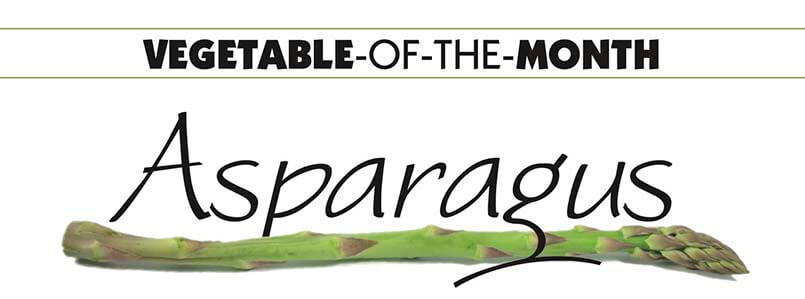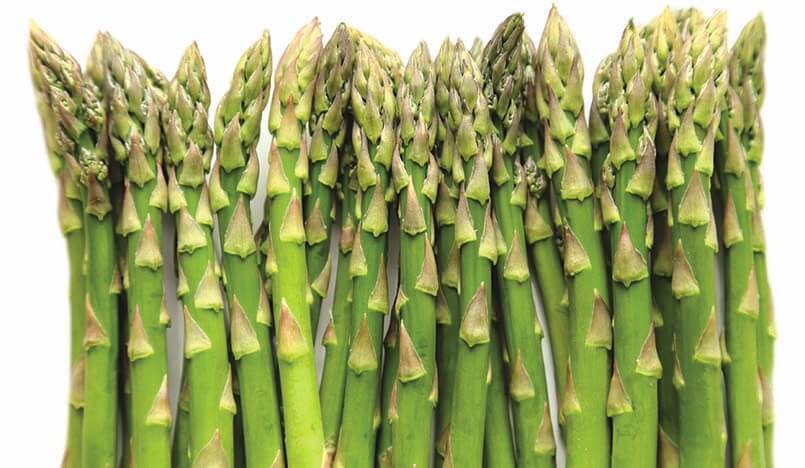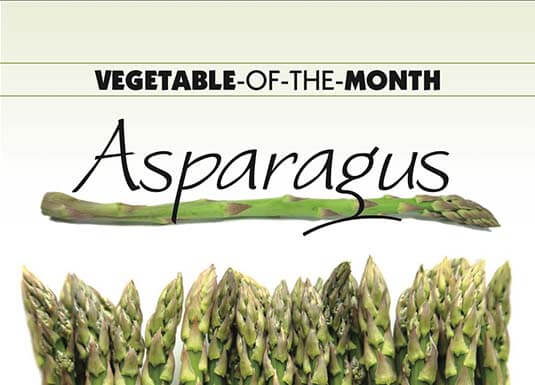
Asparagus has powerful health benefits.
IT IS LOADED WITH NUTRIENTS: Asparagus is a very good source of fiber, folate, vitamins A, C, E and K, as well as chromium, a trace mineral that enhances the ability of insulin to transport glucose from the bloodstream into cells. Asparagus is packed with antioxidants, ranking among the top fruits and vegetables for its ability to neutralize cell-damaging free radicals (which may help slow the aging process according to preliminary research).
The most common type of asparagus is green, but you might see white and purple too. No matter what type you choose, asparagus is tasty and can be cooked several different ways or enjoyed raw in a salad.
Look for sturdy spears with tight heads. The cut ends should not look desiccated or woody. Fresh asparagus should snap when bent.
PREP: Trim of ends
BRAISE: Place a large skillet over high heat. Add asparagus, ½ cup of water and a slice of lemon. Cover and bring to simmer, cook until tender, about five minutes.
GRILL: Preheat grill, lightly oil rack. Place asparagus over direct heat, medium heat; cook until browned, turning occasionally, about six minutes.
MICROWAVE: Place asparagus on a glass platter or pie pan; add ¼ cup water, drizzle with 1 teaspoon extra-virgin olive oil, and cover tightly. Microwave on high until tender, about three minutes.
ROAST: Preheat oven to 500 degrees. Spread asparagus on a baking sheet or in a pan large enough to hold in single layer. Coat with 2 teaspoons extra-virgin olive oil. Roast, turning once halfway through cooking, until tender wilted and browned, about 10 minutes.



